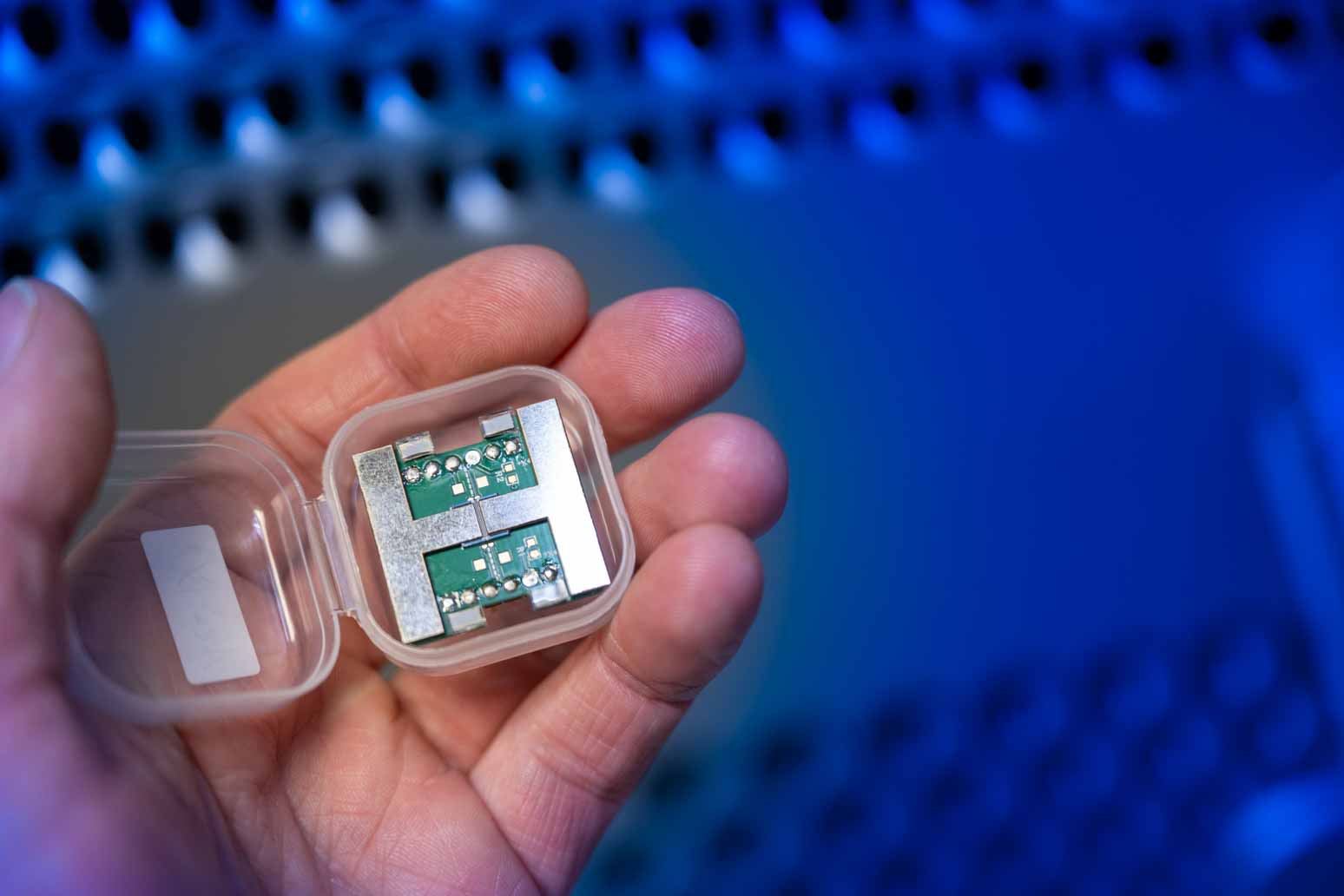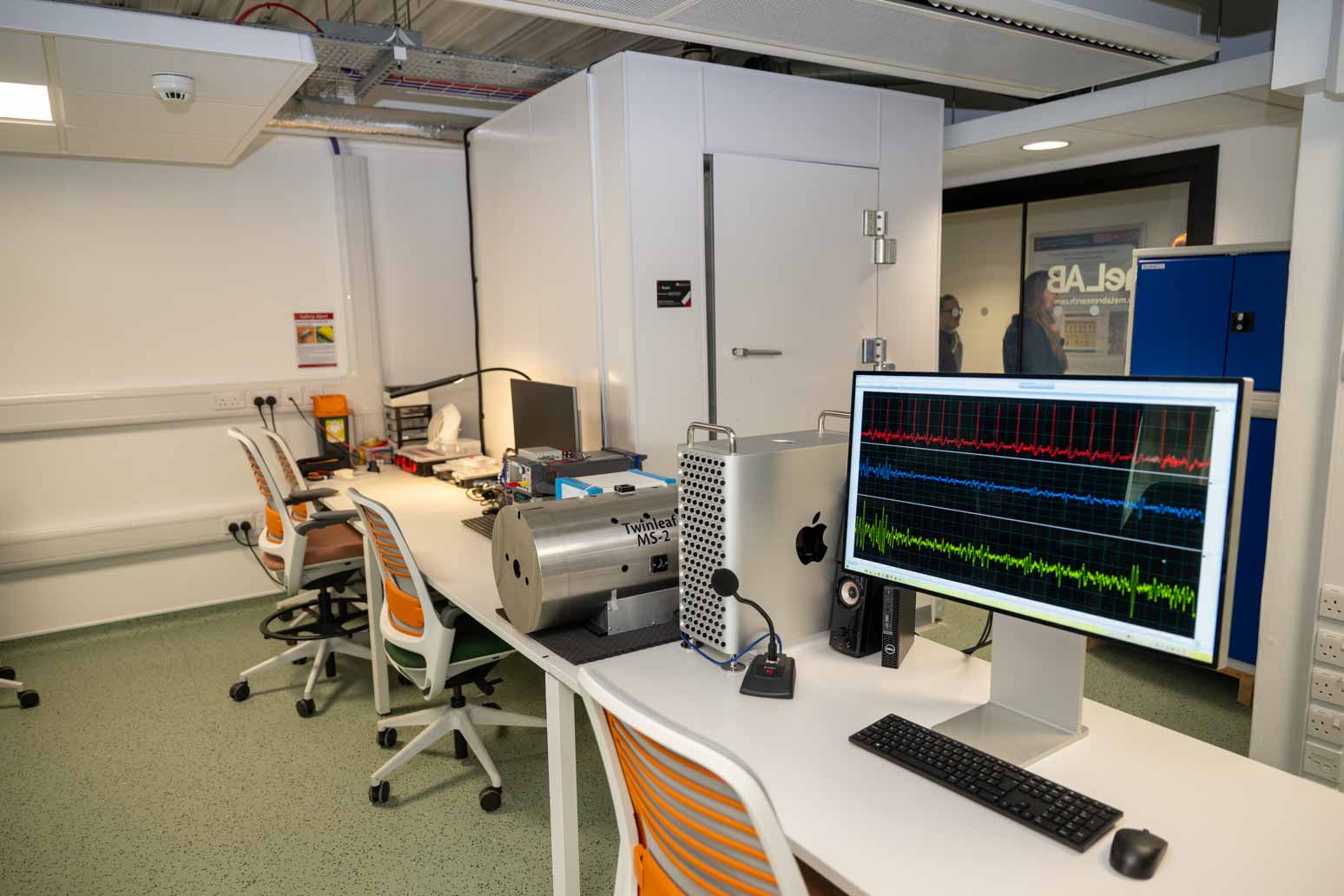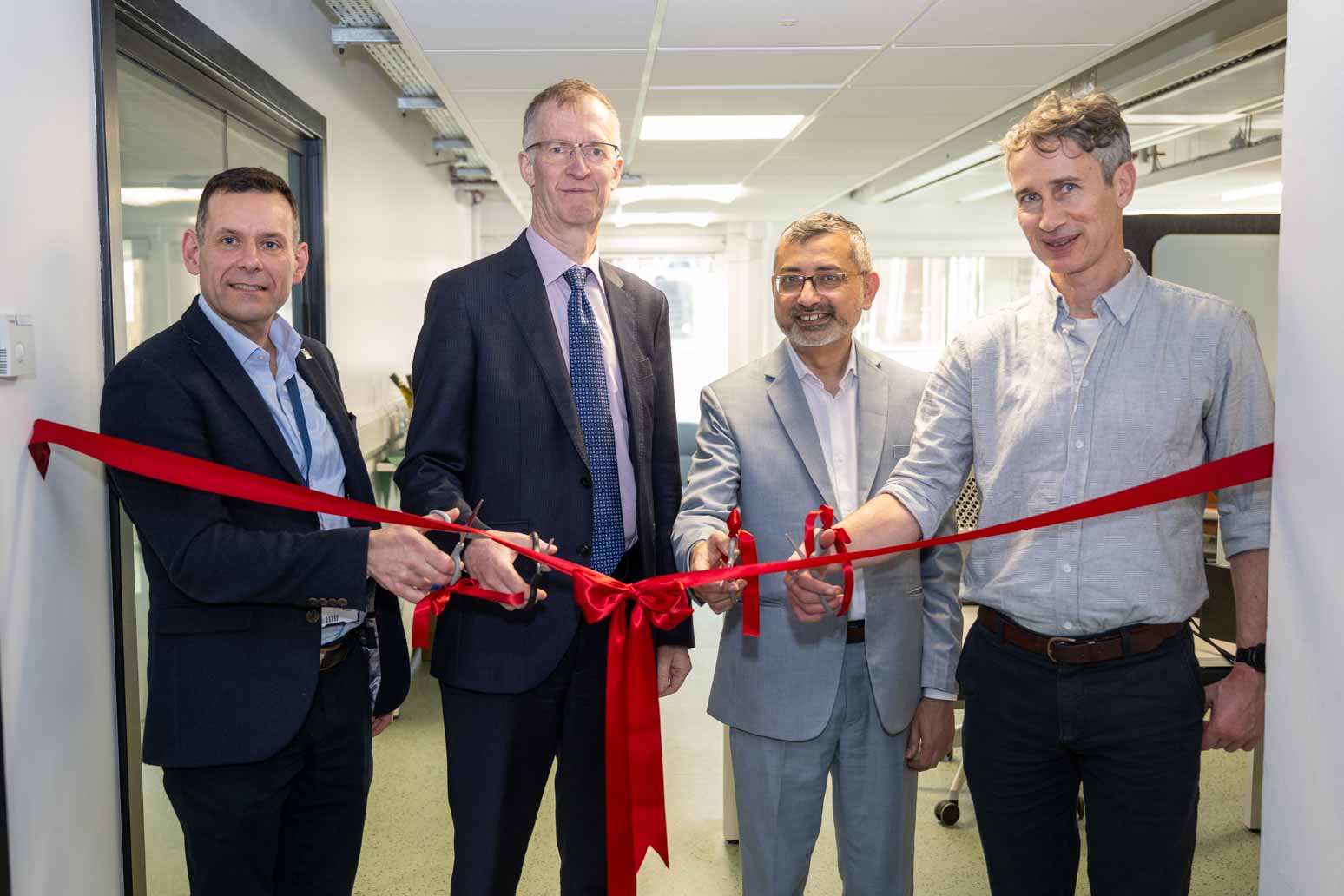The University of Glasgow is set to become one of the UK’s leading centres for cutting-edge medical magnetics research with the establishment of a new laboratory facility.
The University’s new magnetism lab, equipped with a bespoke magnetically shielded room known as MuRoom, was officially opened on Monday, 24 February with an event at the James Watt School of Engineering.
Built with a £250,000 investment from the School, the lab was custom-engineered to eliminate magnetic interference from external sources, such as nearby electronics and the Earth’s magnetic field. This magnetism lab will enhance the University’s research and development capabilities, supporting spinouts like Neuranics, which is focusing on pioneering magnetic solutions.
The MuRoom within the lab will enable researchers to develop new prototypes of devices capable of detecting the extremely weak biomagnetic signals produced by human muscles (magnetomyography or MMG) and organs such as the heart (magnetocardiography or MCG) and brain (magnetoencephalography or MEG).
In the future, these advanced devices could replace the current standard method for monitoring muscle, heart and brain activity based on electrical recording. Unlike electrical measurements, which require direct skin contact and are susceptible to interference, magnetic signals offer significant advantages.
Since biological tissues such as skin and subcutaneous fat are transparent to magnetic fields, these signals experience minimal distortion. This results in a higher spatial resolution compared to electrical methods.
Moreover, while electrical signals are restricted to the plane of skin and do not yield any vectorial information, magnetic signals are vector sensitive. This allows 3D visualisations of signal source which could enhance the control of advanced prosthetic limbs and pave the way for new forms of human-computer interaction through wearable devices.

Designed to foster collaboration, the magnetism lab will be accessible to both academic researchers and industry partners to advance their own research. One key project currently utilising the facility is SUPREMISE, an Engineering and Physical Sciences Research Council-funded initiative led by researchers from the Universities of Glasgow and Edinburgh, exploring MMG’s multiple potential applications.
The lab will also support Neuranics, a spinout company bringing together researchers from the Universities of Glasgow and Edinburgh to develop spintronics-based sensor solutions for health, fitness, and extended reality (XR) applications.
Neuranics, home to more than 10 alumni from the James Watt School of Engineering, is at the forefront of transforming magnetic sensor solutions for medical and XR applications.
By leveraging cutting-edge research and innovation, the company is redefining how magnetic sensors are used in healthcare and immersive technologies. Their advancements enable more precise, energy-efficient, and compact sensing solutions, paving the way for breakthroughs in medical diagnostics, neurotechnology, and next-generation XR experiences.
Professor Muhammad Imran, Head of the James Watt School of Engineering, said: “We’re delighted to officially open the magnetism lab, which is the first facility in Scotland to offer this level of sophisticated shielding to enable advances in biomedical and sensing research.
“The lab helps to drive forward the University’s approach to innovation, enabling new developments in medical technology. The lab will foster new partnerships between academia and industry in next-generation medical sensors and transformative technologies, offering new solutions for healthcare, prosthetics, and human-computer interaction.”
Professor Hadi Heidari, from the James Watt School of Engineering and Chief Technology Officer (CTO) of Neuranics, led the installation of the magnetism lab. He said: “The potential applications are incredibly exciting, especially in medical diagnostics. Three-dimensional measurements of magnetic signals could help identify conditions that traditional methods might overlook, such as certain types of ‘silent’ strokes.
“The magnetism lab will help us make MMG sensors sensitive enough for sophisticated measurements of the human body, which could be integrated into everyday life. That might mean a credit card-sized device that monitors your heart for 24 hours or a wristband that allows precise control of prosthetic limbs.”
The magnetism lab opening ceremony was attended by Professor Muhammad Imran, Uzma Khan, Vice-Principal for Economic Development and Innovation; Professor Chris Pearce, Vice-Principal for Research and Knowledge Exchange; and Eric Yeatman, Head of the College of Science & Engineering.

